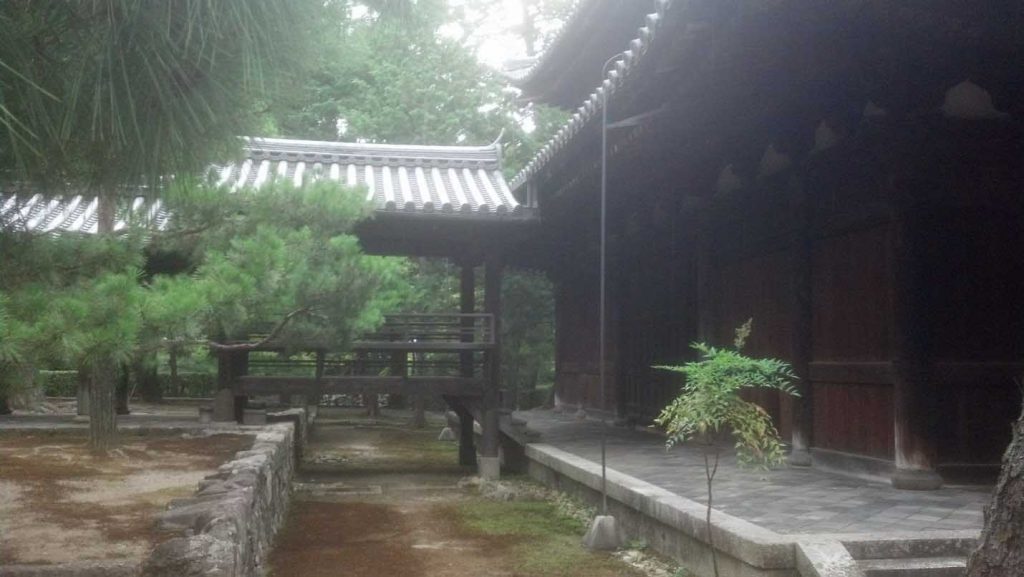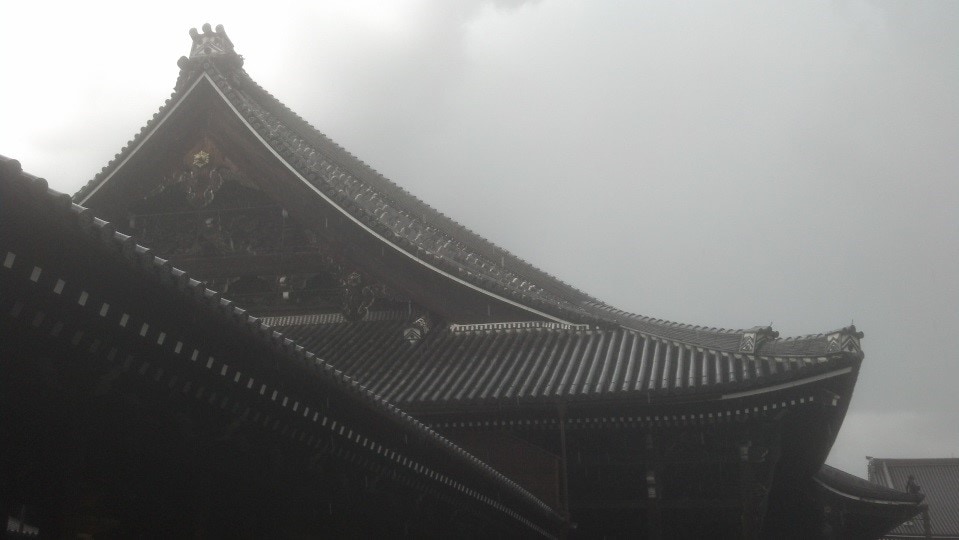Published in Echoes 2019: Writers in Kyoto Anthology #3, available from Amazon

Short poems written at notable places in Kyoto.
At The Sanjo Bridge²
long after sunset
I wait for you at Sanjo
counting stars as they appear
At Daitokuji
the chanting monks have ceased
but silence does not come
it seems the Zen cicadas
have a sutra of their own
At Okazaki Park³
seduced, the cherries
offering their secrets up
to autumn’s slanted sun
At Nishi Honganji
mid-summer downpour
rushing out to save my shoes
no wonder they wear geta₄ here

At Nanzenji
dozens of schoolboys
hurry past the Sanmon Gate₅
fingering their phones
New Year’s Eve in Kyoto
temple bells unrung
orange and yellow banners blaze
year’s dying glory
Three Days Later
nine by twelve they rang
crowds departed, icy breath
emptiness restored
At Kitano Temmangu₆
This visit I could bring
No finely crafted verse
Will you accept these scraps
I scribbled in Miyako
As offering to your spirit?
Notes
- Miyako, (lit. “capital”) is an ancient name for Kyoto, dating back to the time when Kyoto was the imperial capital.
- Kyoto’s Sanjo Bridge has been a rendezvous point for lovers for over a thousand years.
- In the fall of 2018, many parts of Japan saw cherries blooming amid unseasonably warm weather.
- Geta are wooden sandals set atop descending wooden slats, used for walking in wet or muddy terrain without getting one’s feet wet.
- Nanzenji’s Sanmon Gate (lit. “triple gate”) is an imposing three story structure that represents the primary landmark of this temple.
- Kyoto’s Kitano Temmangu shrine is dedicated to Sugawara no Michizane (845AD – 903AD), who is revered in Japan as the deity of scholarship and poetry. Students often visit his shrines pick up an amulet and pray for success in their exams. This poem is patterned after Michizane’s own poem in the Hyaku Nin Isshu anthology, which can be translated as:
this visit I could bring
no gaily colored flags
will you accept these rusted leaves
I gathered on Tamuke
as offering to your spirit?
